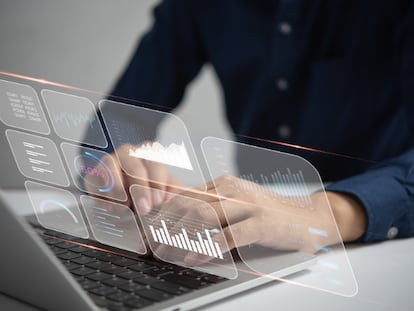Two eyes with wings
The Watanabe research group in Tokyo has found that their ability to recognize a style of painting means trained pigeons can even distinguish between the works of Monet and Picasso. But their brains are tiny ¨C only about 1/1000th the size of ours ¨C so how do they do this, and does it have any relevance to us?
Comparisons between humans and animals are essential for gaining insight into the way in which perception and cognition in our own species have evolved. These abilities are based on the physical makeup we have inherited from our ancestors (for example the vertebrate eye), but such structures have also been adapted to the particular way we live.
Likewise, other species have developed cognitive abilities in parallel with ours, as adaptations to the demands of their own, specific environment and their ecological niches. Understanding the animal roots of human cognition requires a comprehensive assessment of the similarities as well as the differences between our own skills and those of other species. Therefore it is particularly important to study not only species that are closely related to us (namely the great apes), but also evolutionary remote ones such as pigeons. Due to their extraordinary visual abilities, these birds provide a perfect model for a comparative investigation of the development of perceptual and cognitive skills that have been shaped differently by evolution in different species, through the processes of selection and adaptation.
We decided to train pigeons to use ˇ®Skinner boxesˇŻ ¨C wooden chambers with a touchscreen for stimulus presentation and a feeder for reinforcement. The pigeons learn to peck at positive stimuli to get a food reward, and to refrain from pecking at negative stimuli in order to avoid a delay. We showed, for example, that pigeons readily learned to classify pictures of human faces according to sex (see Figure; top). But did they use a complex ˇ®male/femaleˇŻ concept as humans would do? Not at all! Instead, they relied exclusively on simple perceptual features. In the first place they used the brightness of the faces (the male faces were, on average, darker than the female faces), and when we normalized the pictures for brightness, the birds turned to colour (the male faces tended to contain more red, the female faces contained more green and blue).
But the cues they follow arenˇŻt always that simple. In a series of experiments I re-investigated and extended the famous findings by Herrnstein and Loveland (Science, 146, 549¨C551, 1964) who showed that pigeons could classify photographs according to the presence or absence of humans and that this ability could be extended to novel pictures with and without humans (see Figure; bottom). I found evidence that this classification was not based on some single perceptual cue but on a complex representation that included a collection of differently weighted human-specific features. My pigeons even classified pictures correctly as ˇ®humansˇŻ when the figure of a person was pasted onto a former ˇ®non-humanˇŻ background. When only parts of a person were shown (e.g. a head) or when the figures were scrambled so that the parts were not in their proper biological order, performance dropped but did not break down completely ¨C just as if the pigeons realized that the pictures contained elements of humans but that there was either something ˇ®missingˇŻ, or ˇ®wrongˇŻ in the configuration.
Recently, I have even found evidence that pigeons obviously recognize that pictures are representations of real objects (instead of just being meaningless patterns). After being trained on pictures of incomplete human figures, my pigeons also judged pictures of the previously missing parts as belonging to the ˇ®humanˇŻ class, but rejected pictures showing arbitrarily shaped patches of human skin. This difference in responding to ˇ®meaningfulˇŻ parts and ˇ®meaninglessˇŻ patches can be best explained by assuming that the pigeons had learned about humans and their constituent parts through experience with real people, and that they were able to apply this knowledge to pictures of humans as well. But this means nothing less than that pigeons are indeed able to recognize the correspondence between real humans and pictures of them!
A challenge for future research will be to assess the cognitive level at which they do this. The most exciting issue will arise if pigeons, like humans, are indeed able to understand that pictures are abstract representations of real objects. This means that they should be able to tell a picture apart from the object it shows (i.e., picture¨Cobject confusion must be ruled out) and would have to realize that a picture is something that stands for something other than itself.
The ability of pigeons to categorize objects is impressive and probably greatly exceeds what most people would expect. These fascinating animals are anything but ˇ®birdbrainsˇŻ, and investigating their perceptual and cognitive skills is interesting in its own right. Quite apart from this, explaining how animals categorize objects can also provide insights into the roots of our own, more advanced, cognitive abilities.
Tu suscripci¨®n se est¨˘ usando en otro dispositivo
?Quieres a?adir otro usuario a tu suscripci¨®n?
Si contin¨˛as leyendo en este dispositivo, no se podr¨˘ leer en el otro.
FlechaTu suscripci¨®n se est¨˘ usando en otro dispositivo y solo puedes acceder a EL PA?S desde un dispositivo a la vez.
Si quieres compartir tu cuenta, cambia tu suscripci¨®n a la modalidad Premium, as¨Ş podr¨˘s a?adir otro usuario. Cada uno acceder¨˘ con su propia cuenta de email, lo que os permitir¨˘ personalizar vuestra experiencia en EL PA?S.
?Tienes una suscripci¨®n de empresa? Accede aqu¨Ş para contratar m¨˘s cuentas.
En el caso de no saber qui¨¦n est¨˘ usando tu cuenta, te recomendamos cambiar tu contrase?a aqu¨Ş.
Si decides continuar compartiendo tu cuenta, este mensaje se mostrar¨˘ en tu dispositivo y en el de la otra persona que est¨˘ usando tu cuenta de forma indefinida, afectando a tu experiencia de lectura. Puedes consultar aqu¨Ş los t¨¦rminos y condiciones de la suscripci¨®n digital.




























































